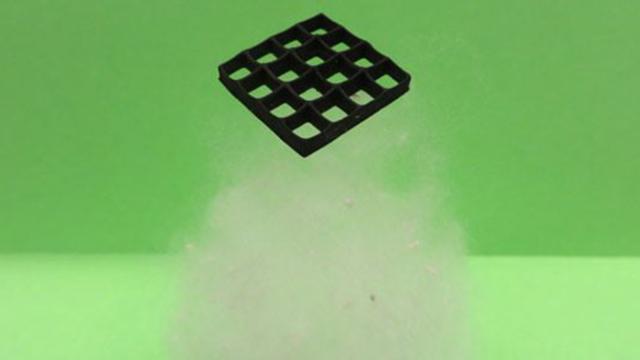First there was aerogel. Then there was graphene aerogel. Now, there’s 3D-printed graphene aerogel. That’s a whole lot of scientific buzzwords in a single lump of feather-light material.
The new process, developed by researchers from State University of New York at Buffalo and Kansas State University, uses 3D printing to layer up a graphene paste. In turn, it can create a complex structures that can then be turned into aerogel.
To do that, the team mixes graphene oxide with water to create a paste, which is then printed onto a solid platform at -25C, where it instantly sets solid. With a little time, complex structures can be created. Then, the component is quenched in liquid nitrogen and slowly freeze dried to remove all its water content, then heated to remove excess oxygen.
Bingo: 3D-printed graphene aerogel. The resulting lump shares properties with the graphene aerogels of the past — super low density, high compressibility, good conductivity — only it’s easier to craft into complex shapes. The research is published in the journal Small.
Actually, it’s not quite as light as the record-breaking graphene aerogel, being three times as dense. But it still only weighs −3, which is pretty damn impressive.
Top image: 3D-printed graphene aerogel set upon some fluff. (Image by State University of New York at Buffalo and Kansas State University)
